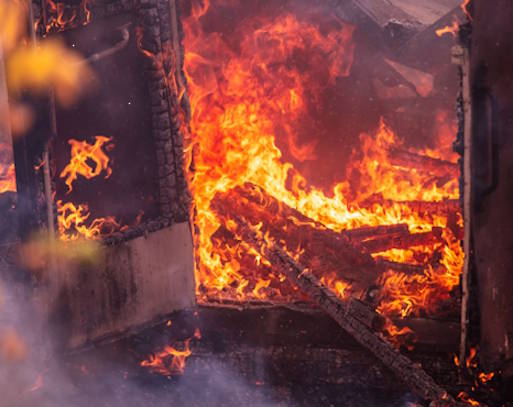
Cutting the threat of giant wildfires by axing harmful Clinton-era forest policies
Dramatically reversing federal management of the nation’s natural resources, an over two-decades-old rule that has left millions of acres of U.S. Forest Service lands at high risk of catastrophic wildfires is being put to the torch by the Trump administration.
Developed by the Clinton administration in the late 1990s, and going into effect in 2001, the Roadless Area Conservation Rule was said to protect over 58 million acres of Forest Service lands by banning logging and the construction of roads in what amounts to 30 percent of the National Forest System.
But separating these vast lands from the human touch has severely undermined the health of both the forests and the people living in nearby communities. The prohibition on logging has allowed the forests to become overgrown, where not even diseased or dead trees can be removed or brush to be cleared by machinery, resulting in the emergence of giant tinderboxes ready to explode at the first lightning strike or casually thrown-away cigarette. Firefighters attempting to extinguish blazes that break out in roadless areas are hindered from doing their job due to the…lack of roads.
“Instead of protecting forests,” Agriculture Secretary Brooke Rollins wrote of the Roadless Rule in The Desert News, “it has trapped them in a cycle of neglect and devastation. To date, we’ve seen more than 8 million acres of Roadless Areas burn. To put that into perspective, the average acreage lost to wildfire each year has more than doubled since 2001.”
With a new wildfire season rapidly upon us, the Agriculture Department, which oversees the Forest Service, paints a dire picture of what the Roadless Rule has wrought. ”Of the 58.5 million acres of inventoried roadless areas covered under the 2001 Roadless Rule, 28 million acres are in areas of high or very high risk of wildfire,” the department notes in a press release. “Rescinding this rule will allow this land to be managed at the local forest level, with more flexibility to take swift action to reduce wildfire risk and help protect surrounding communities and infrastructure.”
In addition to the loss of wildlife, vegetation, people, and property caught up in rapidly spreading infernos, wildfire smoke has serious health effects on people not directly in the path of a blaze. Exposure to wildfire smoke, which can travel hundreds of miles under prevailing winds, is closely tied to the health effects emanating from fine particles. “Fine particles,” the U.S. Environmental Protection Agency (EPA) explains in its evaluation of human exposure to wildfire smoke, “are respiratory irritants, and exposures to high concentrations can cause persistent coughing, phlegm, wheezing, and difficulty breathing. Even in healthy people, exposure to fine particles can potentially lead to transient reductions in lung function, and pulmonary inflammation.”
An environmental policy that is environmentally destructive and leads to more people being exposed to the hazards of wildfire smoke is something the public does not have to tolerate. “The forests we see today are not the same as the forests of 2001,” Forest Service Chief Tom Schultz points out. “They are dangerously overstocked and increasingly threatened by drought, insect-borne disease, and wildfire.”
By allowing timber to be harvested in areas that were off-limits to logging under the Roadless Rule, both the thinning of dangerously overgrown forests and the revitalization of the nation’s timber industry can be accomplished. Especially hard hit by the Clinton-era Roadless Rule were Washington, Oregon, and Northern California. Lumber production in the Pacific Northwest’s national forests has plummeted since the rule went into effect, with the void being filled by heavily subsidized Canadian lumber. As inflation cools, mortgage rates are expected to fall in the coming months, triggering a demand for new home construction. The millions of acres of Forest Service land that will soon be open to logging will help meet that demand.
The conspicuous failure of the Roadless Rule to deliver on its promise of healthier forests has not kept eco-warriors from yearning for a world that never was. “Stripping our national forests of roadless rule protections will put close to 60 million acres of wildlands on the chopping block,” said Alex Craven, the Sierra Club’s forest campaign manager.
What is really on the chopping block – at long last – is a scheme that has wreaked havoc with the very forests it was supposed to protect.
From cfact.org